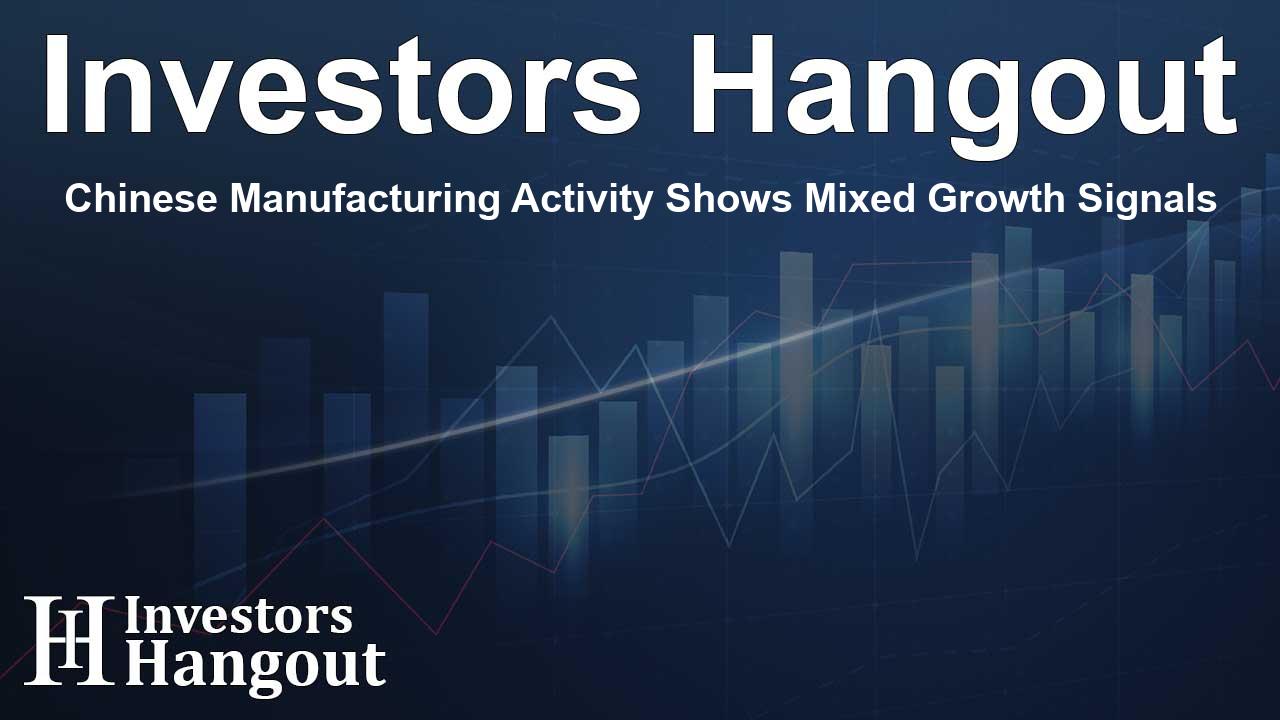Chinese Manufacturing Activity Shows Mixed Growth Signals

Chinese Manufacturing Activity Under Pressure
Recent data indicates that Chinese manufacturing activity exhibited growth that fell below expectations in December. The private purchasing managers' index (PMI) data released highlighted a cooling phase for the sector, suggesting a potential tapering of the positive effects from earlier stimulus measures.
December's PMI Figures Explained
The Caixin manufacturing PMI recorded a reading of 50.5 in December, a figure significantly lower than the anticipated 51.6 and only slightly above November's 51.5. This slowdown is attributed to decreasing export orders and a waning sense of optimism regarding the country’s economic outlook.
Contrast with Government PMI Data
Interestingly, this private sector index contrasts with the official PMI figures issued by the government, which suggested that manufacturing expanded, albeit at a slower pace than forecasted. The official data primarily reflects larger state-run enterprises, whereas the Caixin index focuses on smaller, private companies that are pivotal to understanding the broader economic landscape.
Impact of Recent Stimulus Measures
Since late September, Beijing has implemented numerous stimulus measures aimed at stimulating economic growth. However, there has been a noticeable absence of targeted fiscal policies, likely due to uncertainties surrounding U.S. trade policies with the upcoming presidential transition.
Potential Trade Tariffs Ahead
The incoming U.S. administration, led by President Trump, has signaled intentions to impose significant trade tariffs on Chinese goods. This development poses a risk to China's already fragile economic recovery efforts, raising concerns about a potential trade war and its subsequent economic ramifications.
Future Outlook for Chinese Manufacturing
While the December figures reflect some immediate challenges, analysts suggest that the Chinese government is likely to enhance its stimulus measures further to combat rising trade tensions and economic hurdles. As the manufacturing sector braces for a turbulent period ahead, the focus will remain on how these strategies can effectively support growth in the forthcoming months.
Frequently Asked Questions
What does a PMI below 50 indicate?
A PMI below 50 generally indicates contraction in the manufacturing sector, while above 50 suggests expansion.
How do government and private PMI data differ?
The government PMI focuses on larger state-run firms, whereas private PMI data like Caixin includes smaller, private companies, offering different insights into economic health.
What might be the implications of trade tariffs on China?
Trade tariffs could hinder China's economic growth by increasing costs for exporters and provoking retaliatory measures from the Chinese government.
What steps might the Chinese government take in response to economic challenges?
The Chinese government may increase stimulus measures and economic support initiatives to boost growth amidst external trade pressures.
Why is manufacturing data significant for investors?
Manufacturing data is crucial as it reflects the economic activity level, influences market confidence, and forecasts potential changes in monetary policy.
About Investors Hangout
Investors Hangout is a leading online stock forum for financial discussion and learning, offering a wide range of free tools and resources. It draws in traders of all levels, who exchange market knowledge, investigate trading tactics, and keep an eye on industry developments in real time. Featuring financial articles, stock message boards, quotes, charts, company profiles, and live news updates. Through cooperative learning and a wealth of informational resources, it helps users from novices creating their first portfolios to experts honing their techniques. Join Investors Hangout today: https://investorshangout.com/
Disclaimer: The content of this article is solely for general informational purposes only; it does not represent legal, financial, or investment advice. Investors Hangout does not offer financial advice; the author is not a licensed financial advisor. Consult a qualified advisor before making any financial or investment decisions based on this article. The author's interpretation of publicly available data shapes the opinions presented here; as a result, they should not be taken as advice to purchase, sell, or hold any securities mentioned or any other investments. The author does not guarantee the accuracy, completeness, or timeliness of any material, providing it "as is." Information and market conditions may change; past performance is not indicative of future outcomes. If any of the material offered here is inaccurate, please contact us for corrections.